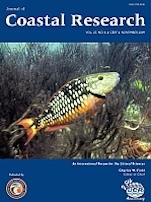Here we present shoreline change rates for the beaches of southeast Oahu, Hawaii, calculated using recently developed polynomial methods to assist coastal managers in planning for erosion hazards and to provide an example for interpreting results from these new rate calculation methods. The polynomial methods use data from all transects (shoreline measurement locations) on a beach to calculate a rate at any one location along the beach. These methods utilize a polynomial to model alongshore variation in the rates. Models that are linear in time best characterize the trend of the entire time series of historical shorelines. Models that include acceleration (both increasing and decreasing) in their rates provide additional information about shoreline trends and indicate how rates vary with time. The ability to detect accelerating shoreline change is an important advance because beaches may not erode or accrete in a constant (linear) manner. Because they use all the data from a beach, polynomial models calculate rates with reduced uncertainty compared with the previously used single-transect method. An information criterion, a type of model optimization equation, identifies the best shoreline change model for a beach. Polynomial models that use eigenvectors as their basis functions are most often identified as the best shoreline change models.
How to translate text using browser tools
1 November 2009
Historical Shoreline Change, Southeast Oahu, Hawaii; Applying Polynomial Models to Calculate Shoreline Change Rates
Bradley M. Romine,
Charles H. Fletcher,
L. Neil Frazer,
Ayesha S. Genz,
Matthew M. Barbee,
Siang-Chyn Lim
ACCESS THE FULL ARTICLE
coastal erosion
erosion rate
EX
EXT
Hawaii
information criterion
polynomial





